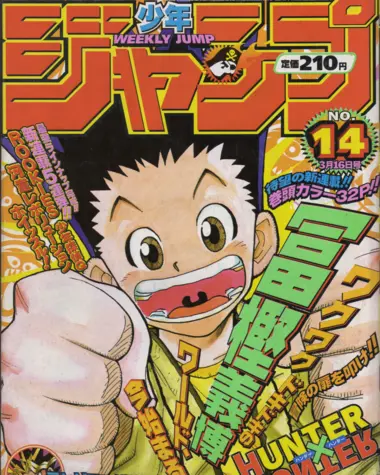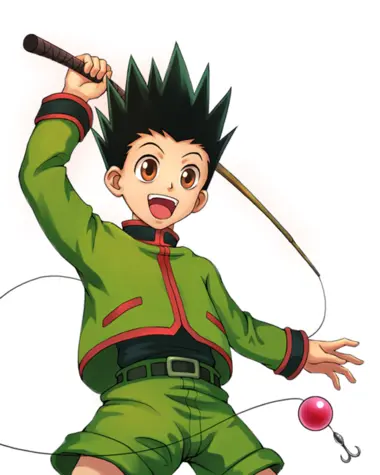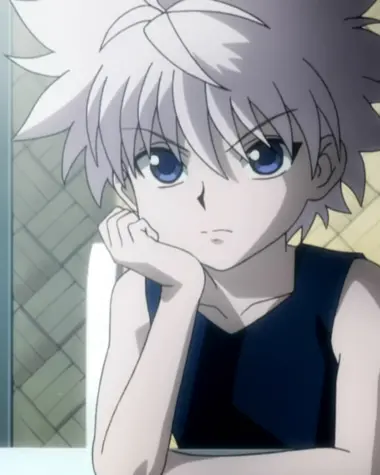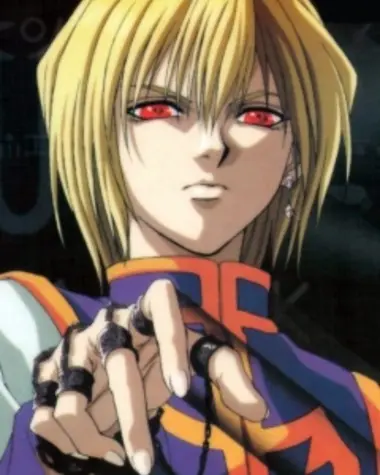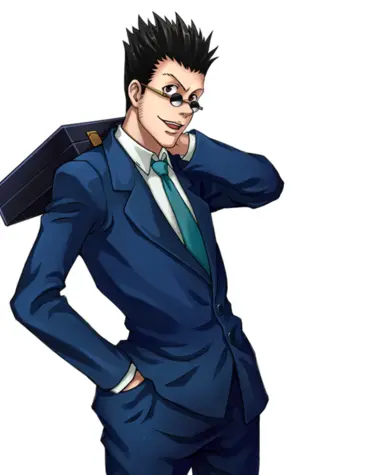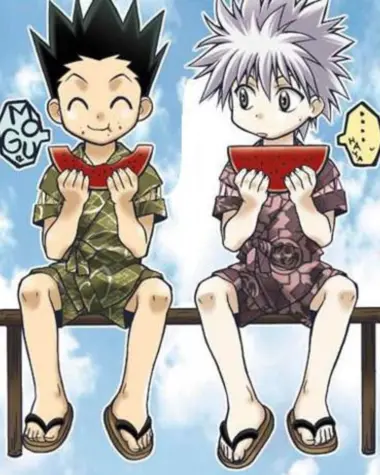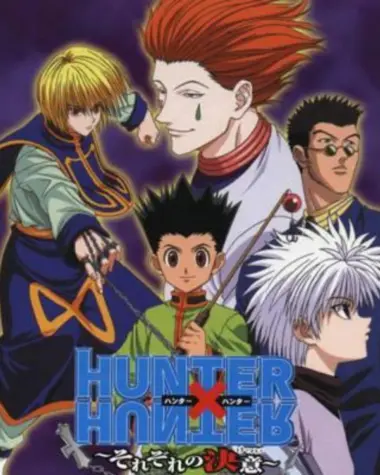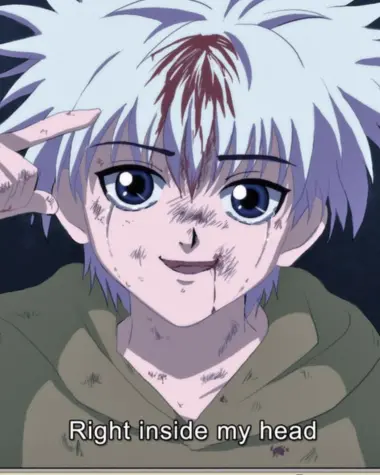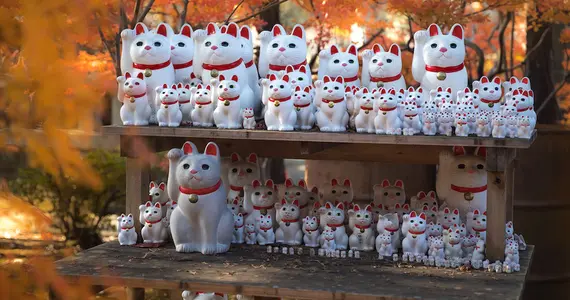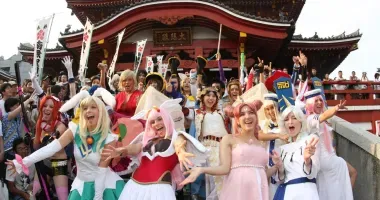Hunter x Hunter
- Published on : 26/12/2022
- by : bryan@japan-experience.com
- Youtube
Let's go and discover the world!
Extremely popular action-adventure shonen, despite the numerous interruptions it was subjected to to preserve its author's health, Hunter x Hunter is a real reference of the genre. From the characters' clothing style to the settings and contexts proposed, Hunter x Hunter honors Japanese pop culture and quickly asserts its aesthetic.
Who has never heard of the unavoidable duo Gon & Killua? Considered as one of the most endearing duos in manga, Gon and Killua have managed to stand out and become emblematic.
From Hunter's examination to Nen's techniques, discover today the manga which captivates since its first publication in 1998.
Exam, Encounters, and Adventures: The Story of Hunter x Hunter
Hunter x Hunter is the story of Gon Freecs, an 11-year-old boy who wants to become a hunter* and go in search of his father who abandoned him to his aunt when he was born.
When leaving to take the hunter exam, Gon meets Kurapika and Leorio, respectively 17 and 19 years old. Over the course of a journey allowing them to access the exam, Gon manages to befriend these two characters who are at odds with each other.
As the exam begins, Gon meets Killua Zoldyck , a young boy of the same age who possesses a strange resistance to poisons. Very quickly, the two also become friends and it is the beginning of a succession of adventures which will bring the group, but especially the two new friends, in extreme situations where their mind as well as their life will be put to the test.
Many antagonists punctuate the adventures of our heroes: Hisoka , the clown magician with psychopathic tendencies, who arrives quickly in the story, but also Illumi Zoldyck , the Phantom Troupe or even the Chimera Ants .
Hunter x Hunter is above all a very realistic human work on an emotional level. As in real life, the line between good and bad is very thin and depending on the context, anyone can experience these two extremes.
* Hunters are the elite of society. After passing the very dangerous (and sometimes deadly) exam, they are allowed to practice any profession and to access the most forbidden places, simply by presenting their license.
The lack of differentiation between good and evil through the Gon & Killua duo
In most manga, it is common that the notions of good and evil are not separated in a simplistic way, but rather in a worked and realistic way. Here, mangaka Yoshihiro Togashi takes the character writing of Hunter x Hunter even further, intentionally blurring the lines between good and evil in the personalities of certain characters.
Don't worry, no spoilers here! Gon, for example, s perceived from the beginning as a nice guy, a little naive but willing to do anything for his friends. In short, a very pure person. The reality is more complex: Gon has no notion of right and wrong, he acts selfishly to achieve his desires. His most recurrent desire is to save his companions, which leads to the observation of this double facet: Gon is capable of the best, as well as the worst, to achieve his goals.
Killua, on the other hand, is seen from the beginning as a somewhat selfish and individualistic character, who is only interested in Gon. Coming from the Zoldyck family, specialized from father to son in assassinations , the reader/viewer is quickly led to think that Killua is only capable of the worst. Expectations are reversed and we notice that Killua is very invested in this first friendly relationship, ready to do anything to follow Gon, protect him and share the adventure by his side. He also shows himself to be less extreme than his best friend, sometimes even afraid of the latter's lack of limits.
The development of these characters, but also of their relationship, is one of the symbols of the work Hunter x Hunter and perfectly illustrates the yin-yang principle according to which nothing is completely white or black . The complexity of the characters brilliantly and intelligently raises questions about human nature in the face of good and evil.
A popularity that gave birth to 2 anime: 1999 and 2011
From its first publication in 1998 , Hunter x Hunter was a sensation! Faced with this strong popularity, an animated adaptation was launched the following year by the Nippon Animation studio, in 1999 : this was the first version of Hunter x Hunter on television. With a very old school charm specific to the 80s and 90s, the anime met with great success and was even exported to France. The series, which faithfully follows the story of the manga, is nevertheless stopped when it caught up with the manga and no more content was adaptable. It has a total of 62 episodes.
The manga has not lost in popularity, a second animated version is thought out and released in 2011 by a different team: this time, the famous Madhouse studio is in charge. In a more modern design and in a style more specific to the 2010s, the anime picks up the story from the beginning. Many details change in terms of character aesthetics : Kurapika is a little more androgynous, Hisoka 's hair color and outfits are different, Gon and Killua look more childish, etc.
Although very popular and appreciated, the anime ends in 2014 for the same reason as in 2011: the manga has been caught up, the mangaka Yoshihiro Togashi is on a break for medical reasons and the studio does not want to feed the series of filers (made-up episodes that don't follow the manga story) and lose audience interest. This new version, however, counts no less than 148 episodes.
Since 2014, fans have been hopeful that Yoshihiro Togashi will advance in the writing of his manga so that the anime series can resume and finally be able to witness the continuation of the story that takes a certain turn at the end of the anime. Nevertheless, the manga is progressing very slowly because of the mangaka's health condition, only 37 volumes having been published since 1998, against 72 for Naruto which was published at the same period.

